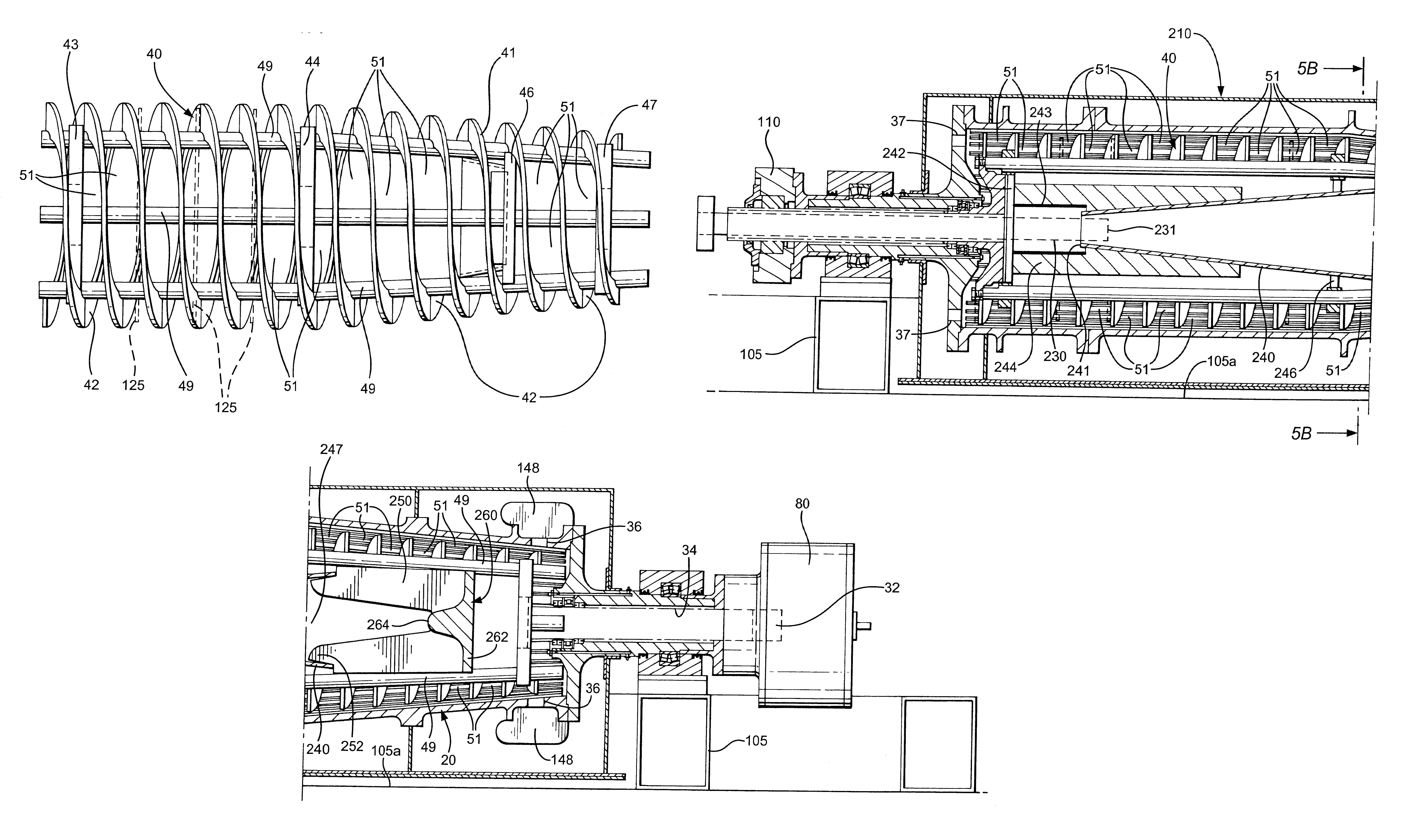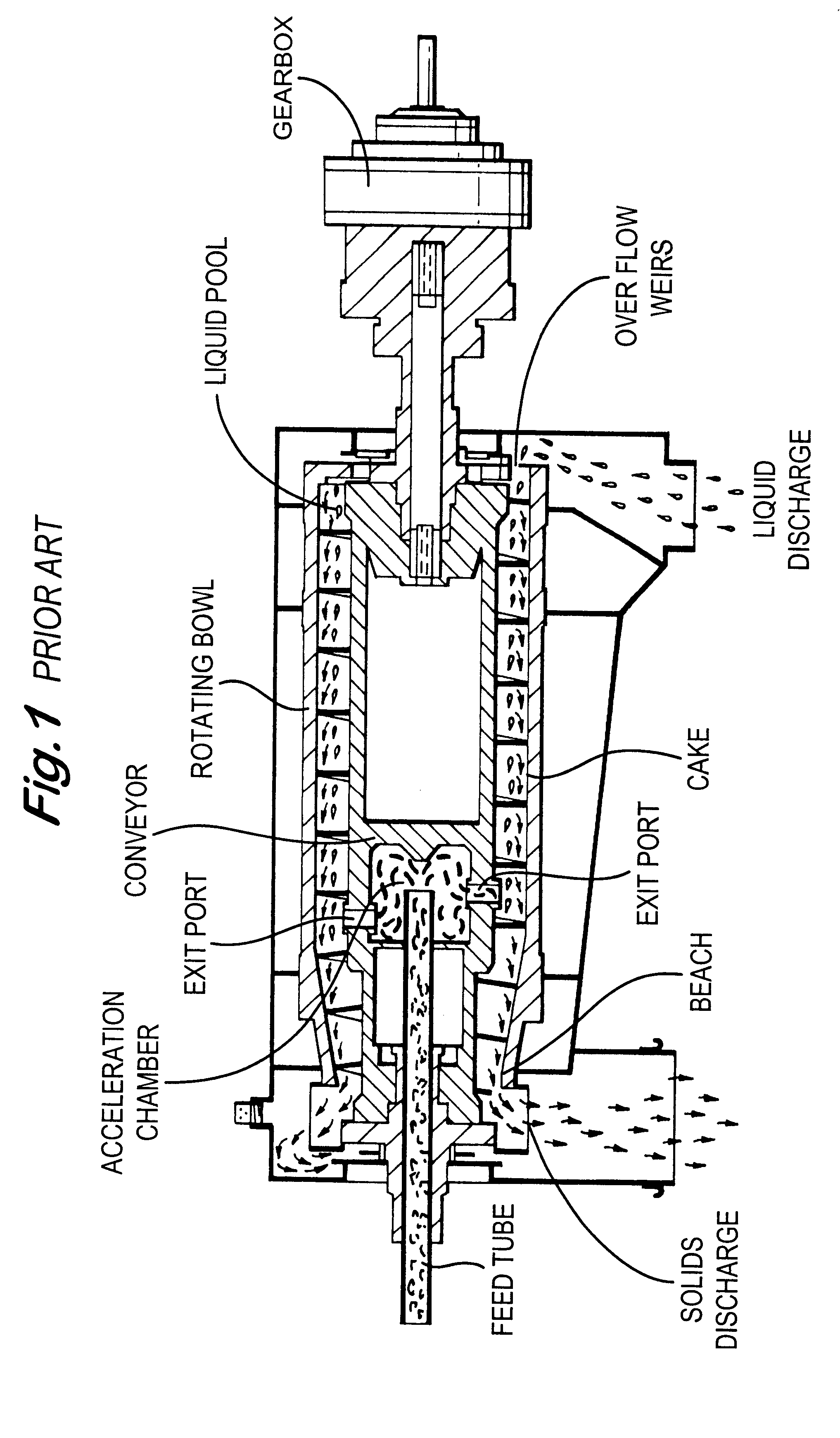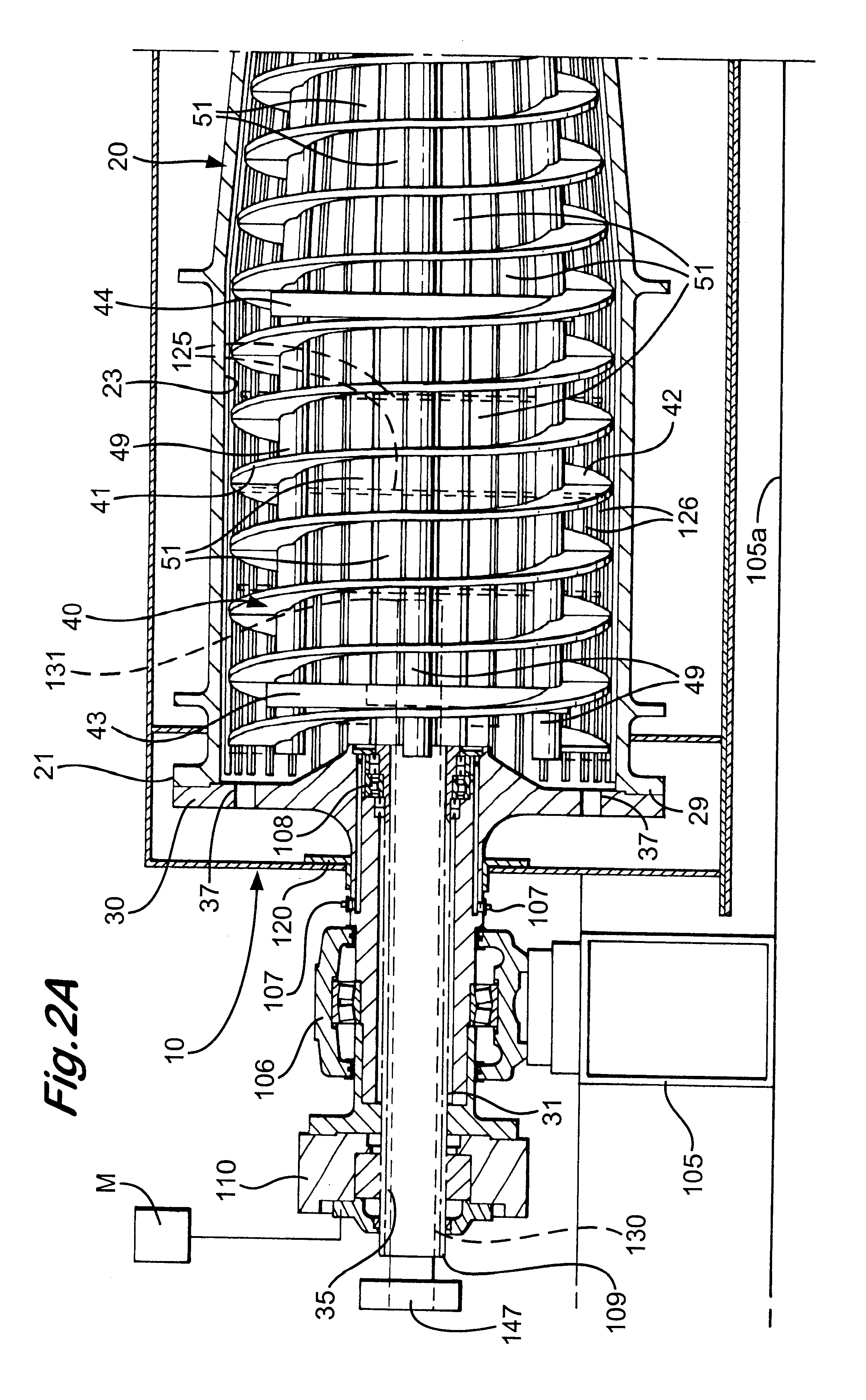Centrifuge with open conveyor and methods of use
a technology of centrifuge and open conveyor, which is applied in the field of centrifuges, can solve the problems of reducing the clarification capability of the centrifuge, requiring a lot of energy to process the mixture, and requiring a large physical size of the centrifuge, so as to reduce the turbulence
- Summary
- Abstract
- Description
- Claims
- Application Information
AI Technical Summary
Benefits of technology
Problems solved by technology
Method used
Image
Examples
Embodiment Construction
FIGS. 2A and 2B show a decanting centrifuge 10 according to the present invention which has an outer housing 12 within which is rotatable mounted a bowl 20 with a hollow interior 23. Within the hollow interior 23 of the bowl 20 is rotatably mounted a conveyor 40 that has a continuous helix or screw 41 that extends from a first end 21 of the bowl 20 to a second end 22 of the bowl 20. Supports 105 on a base 105a support the centrifuge (bowl, conveyor, outer housing, and other components). The supports 105 may themselves be supported on a skid.
A plurality of support rods 49 are disposed within the helix 41 and are connected at points of contact to flights or sections 42 of the helix 41, e.g. by bolting and / or welding. The flights 42 are sized so that they are separated a desired distance from the interior surface of the bowl 20 along the bowl's length. As is well known, the edges of the flights may be lined with side-by-side pieces or tiles made of sintered tungsten carbide or the edge...
PUM
 Login to View More
Login to View More Abstract
Description
Claims
Application Information
 Login to View More
Login to View More - Generate Ideas
- Intellectual Property
- Life Sciences
- Materials
- Tech Scout
- Unparalleled Data Quality
- Higher Quality Content
- 60% Fewer Hallucinations
Browse by: Latest US Patents, China's latest patents, Technical Efficacy Thesaurus, Application Domain, Technology Topic, Popular Technical Reports.
© 2025 PatSnap. All rights reserved.Legal|Privacy policy|Modern Slavery Act Transparency Statement|Sitemap|About US| Contact US: help@patsnap.com



